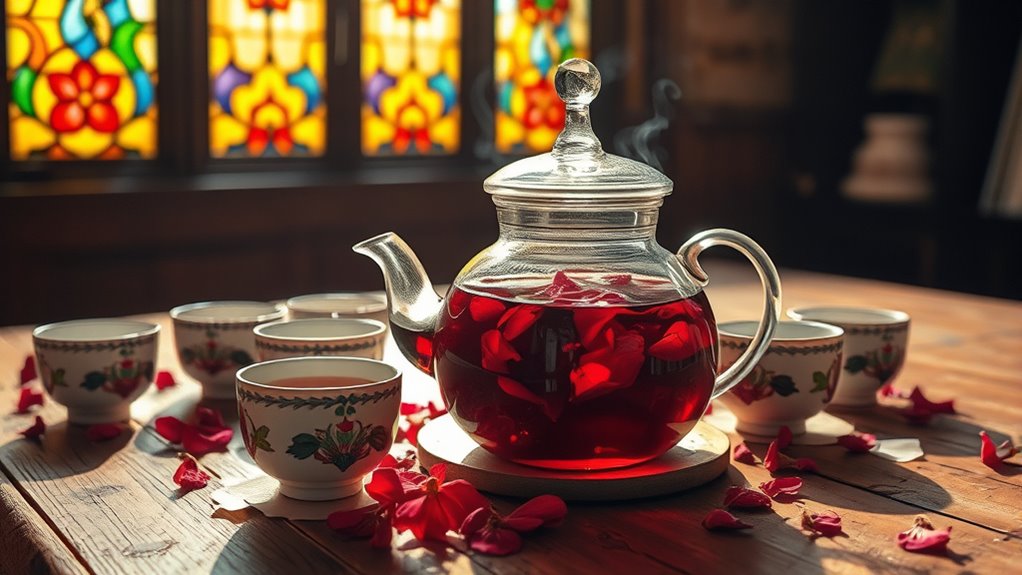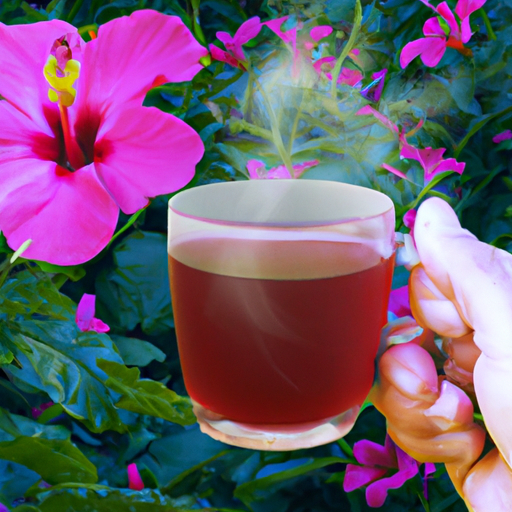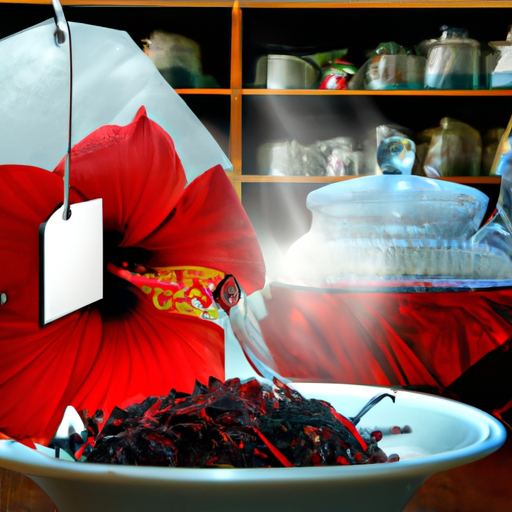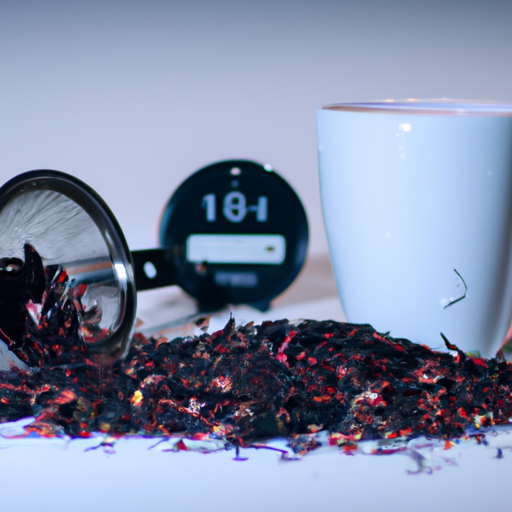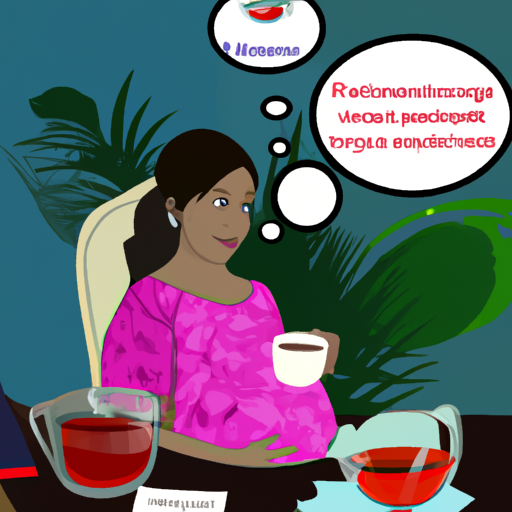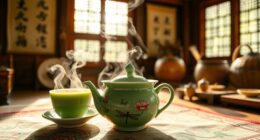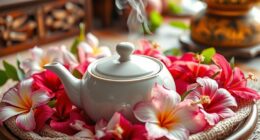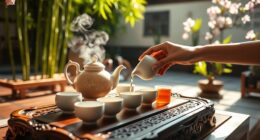Hibiscus tea plays a meaningful role in many local traditions, symbolizing health, vigor, and spiritual renewal. You’ll find it used in ceremonies, offerings, and celebrations, often representing prosperity and community bonding. Its vibrant color and healing properties make it a cherished part of cultural rituals that honor heritage and connection to ancestors. Staying curious will reveal more about how this flower’s rich history continues to influence traditions around the world.
Key Takeaways
- Hibiscus tea is used in traditional herbal remedies for health benefits and spiritual balance across various cultures.
- It plays a vital role in festival rituals, offerings, and ceremonial attire, symbolizing renewal and vitality.
- The bright red petals represent prosperity and strength, embodying cultural identity and collective memory.
- Hibiscus tea and flowers are integral to community gatherings, reinforcing social cohesion and ancestral traditions.
- Its cultural significance extends beyond aesthetics, reflecting resilience, healing, and spiritual harmony within local traditions.

Have you ever wondered how a simple flower like hibiscus has become a staple in various cultural traditions? It’s fascinating to see how this vibrant blossom transcends its visual appeal and finds its way into daily practices and celebrations. In many regions, hibiscus is more than just a pretty flower; it holds deep-rooted significance, especially in herbal remedies and festival rituals. When you explore its role in herbal medicine, you’ll discover that hibiscus has been used for centuries to treat ailments like high blood pressure, digestive issues, and inflammation. Its natural acids and antioxidants make it a popular choice for herbal teas that promote health and wellness. People have relied on hibiscus-infused drinks for generations, believing they not only improve physical health but also bring spiritual balance. This tradition persists today, with countless herbal remedy recipes passed down through families, emphasizing the flower’s healing properties.
In addition to its medicinal uses, hibiscus plays a crucial role in festival rituals across many cultures. When you attend traditional celebrations, you’ll often see hibiscus flowers incorporated into offerings, decorations, and ceremonial attire. For instance, in Hawaiian culture, hibiscus is a symbol of hospitality and beauty, frequently used in leis and adornments during festivities. Similarly, in parts of Africa and Asia, hibiscus flowers are woven into ritual costumes or used as auspicious symbols to invite prosperity and ward off evil spirits. The bright red petals are not just visually striking; they carry symbolic meanings that resonate with the themes of renewal, strength, and life. During festivals, these flowers often serve as focal points in ceremonies, enhancing the spiritual atmosphere and connecting participants to their ancestors and cultural heritage.
You’ll also notice that hibiscus’s significance is reinforced through its role in communal gatherings. Whether it’s a harvest festival, religious celebration, or a local parade, hibiscus-based rituals help unite communities, reminding everyone of shared traditions and ancestral wisdom. The flower’s presence in such events underscores its importance beyond aesthetics, embodying cultural identity and collective memory. As you immerse yourself in these traditions, you realize that hibiscus is more than a plant; it’s a living symbol of cultural resilience, health, and spiritual harmony. Its consistent appearance in herbal remedies and festival rituals highlights how deeply intertwined it is with the cultural fabric of the communities it touches. So, next time you see a hibiscus bloom, remember that it’s carrying centuries of history, healing, and celebration within its vibrant petals.
Frequently Asked Questions
How Is Hibiscus Tea Prepared in Different Cultures?
You can prepare hibiscus tea using various methods across cultures. In some places, you boil dried hibiscus petals and sweeten it with sugar, serving it hot or cold. Cultural variations include adding spices like cinnamon or ginger, or mixing it with fruit juices. In Mexico, it’s called “agua de Jamaica,” while in Egypt, it’s brewed with mint. These methods showcase how preparation methods adapt to local tastes and traditions.
Are There Health Benefits Linked to Traditional Hibiscus Tea Recipes?
Yes, traditional hibiscus tea offers health benefits. You can use it as an herbal remedy to help lower blood pressure and boost your immune system. Its rich antioxidant properties fight free radicals, promoting overall wellness. Drinking hibiscus tea regularly may improve heart health, reduce inflammation, and support digestion. So, incorporating it into your routine provides natural health benefits, making it a tasty way to enhance your well-being.
How Do Local Festivals Incorporate Hibiscus Tea?
Like a treasured jewel, hibiscus tea takes center stage in local festivals. During the Hibiscus Festival, you participate in vibrant tea ceremonies that celebrate its cultural importance, blending tradition with community joy. These events often feature tastings, storytelling, and dances, highlighting hibiscus tea’s role in local identity. By engaging in these festivities, you deepen your connection to the heritage, honoring the plant’s significance through lively, meaningful celebrations.
What Symbols or Meanings Are Associated With Hibiscus in Various Traditions?
You’ll find that hibiscus symbolizes beauty, vitality, and passion in many traditions, representing life’s energy and renewal. Its vibrant red hue often stands for love and strength, making it a powerful cultural representation. In some cultures, it’s also a symbol of hospitality or good fortune. When you see hibiscus used in ceremonies or decorations, it’s conveying these symbolic meanings, highlighting its deep cultural importance worldwide.
Is Hibiscus Tea Used in Rituals Beyond Drinking Practices?
Hibiscus tea is often used in rituals beyond just drinking, embodying its rich symbolism. You might see it incorporated into ceremonies to symbolize beauty, vitality, or protection, reflecting its cultural significance. In some traditions, ritual uses include offering it to deities, using it in cleansing ceremonies, or as a symbol of life’s renewal. Its vibrant color and symbolism make hibiscus tea a meaningful part of various spiritual practices.
Conclusion
You now see how hibiscus tea weaves itself into local traditions, symbolizing more than just a revitalizing drink. It’s a bridge to heritage, a celebration of community, and a reflection of cultural values. Embracing its significance, you realize that understanding these customs helps you appreciate the deeper roots of the culture. Remember, sometimes you have to dig a little to find the treasure, and with hibiscus tea, the richness runs deep.

